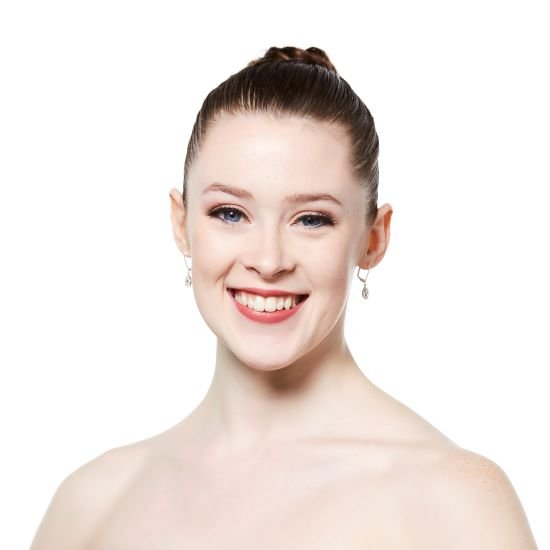
Ellington Nichols, Company Artist, Ballet 5:8. Photo by Kristie Kahns.
I urge you not to miss Ballet 5:8’s important production of “Butterfly” on March 16, 2024. Julianna Rubio Slager’s piece is a “unforgettable and moving” experience” that tells the story about the Terezin Ghetto—really a concentration camp. Terezin was a Nazi showcase to show how “humane” they were to Jews. and many performing and creative artists and writers were forcibly housed there. The Germans would bring in outside visitors, like the Red Cross, to see how benevolent they were. The artists performed under duress and even threats of deportation to places like Auschwitz and some were even sent to their deaths immediately after their performances. Many others died from starvation and disease or were executed by their captors—but some survived to tell the story. “Butterfly” focuses on Friedl Dicker-Brandeis and her student, Helga Weiss. Ballet 5:8, under the direction of Julianna Rubio Slager chose Ellington Nichols, a descendant of a Holocaust survivor, to play Helga.
Company Artist Ellington Nichols comes to Ballet 5:8 from Minnesota where she began her ballet training at the age of 10 at the North Ballet Academy, under the direction of Stephanie Heston, Kim Norberg, and Breanna Dvorak. Nichols moved to Manhattan during her last year of high school to train full-time with Ms. Erin Forrest. She graduated from the Forrest Academy of Ballet New York in the spring of 2019. Nichols joined Ballet 5:8 as a Company Apprentice in 2019 and was promoted to Company Artist in 2020. With Ballet 5:8, Nichols has performed a wide variety of works, including Kevin Jenkins’s “Still Waters,” and Julianna Rubio Slager’s “Reckless,” “Golden Sessions,” “Of Splendors & Horrors,” “4501,” “The Rough-Face Girl,”” Butterfly,” “Brothers & Sisters,” and “The Space in Between.”
What led you to become a professional dancer and more directly, a ballet dancer?
I started dancing later than what’s typical when my figure skating coach told me to take ballet to help me be more graceful on the ice. I ended up falling in love with the movement, community aspect, and storytelling. I always loved ballet out of all the dance styles I learned, mostly because of the precision, attention to detail, and the challenge of it.
What drew you to “Butterfly”?
“Butterfly” was the first large choreography process I was a part of when I first came to Ballet 5:8 in 2019. Immediately, when I heard we were doing a ballet on the Holocaust I was intrigued. Being Jewish myself and a descendent of Holocaust survivors, I knew the story would be important and meaningful.
Did you know about Terezin before you took the role and what did you know or what have you learned?
I did not know about Terezin before researching the ballet. It was so shocking to learn of the tragedy that occurred at Terezin. I was utterly mind-blown to learn that the Red Cross thought that everything was completely fine and did nothing to help those in Terezin.
What was the most difficult part about this role?
While the technical aspects of this ballet are challenging, the most difficult part personally is emotionally portraying Helga’s story. She goes through many trials, and authentically sharing her innermost thoughts is my greatest challenge.
Do you have any other productions on the horizon and is there any role you would like to undertake in the future?
I’m really looking forward to one of our new spring ballet’s “The Sea is Flat” which premieres in April at the Harris Theater. The music is just absolutely glorious and I can’t wait to share it with the audience!
“Butterfly” will be performed on Saturday, March 16, 2024 at 7 pm at the Bowie Center for the Performing Arts, 15200 Annapolis Road, Bowie, MD 20715. There will be two other dances that evening, “Wind” by Steve Rooks and the World Premiere of Julianna Rubio Slager’s “Counterpart.” For more information and to purchase tickets, go online.
Founded in 2012 in the Chicago suburbs, “Ballet 5:8 is a female and minority let premiere ballet company recognized for artistic excellence, innovation and beauty.” Artistic Director Rubio Slager is known for making ballets that draw from “life, faith and diverse perspectives” to tell “relevant stories.”

